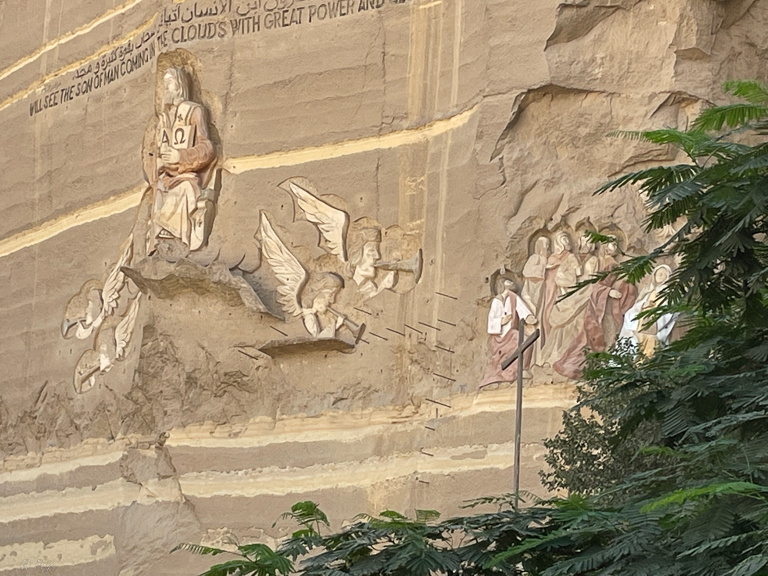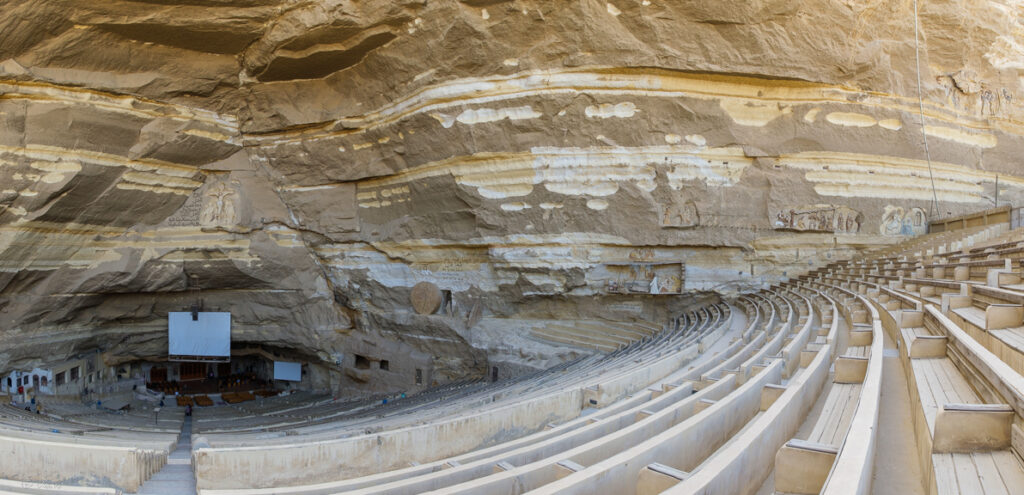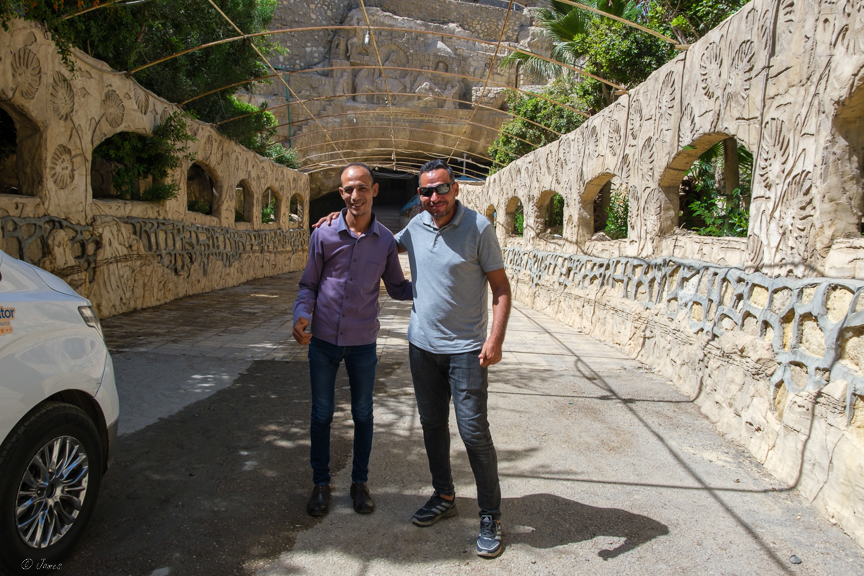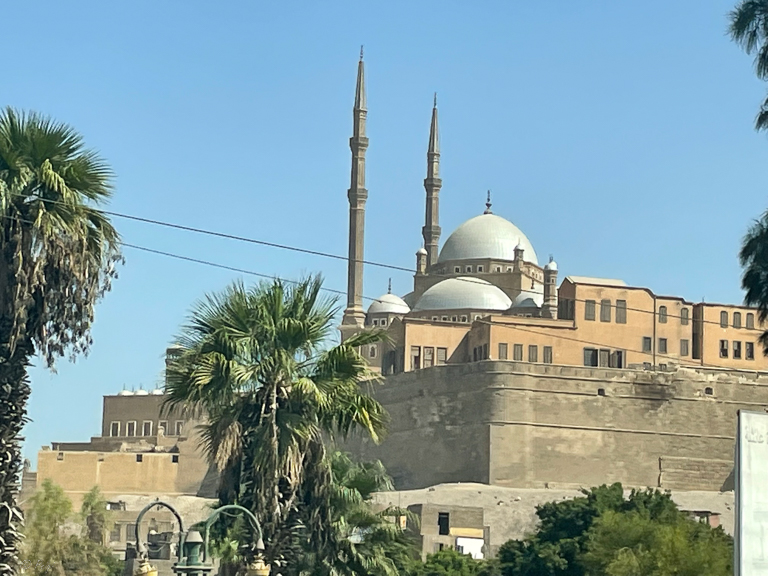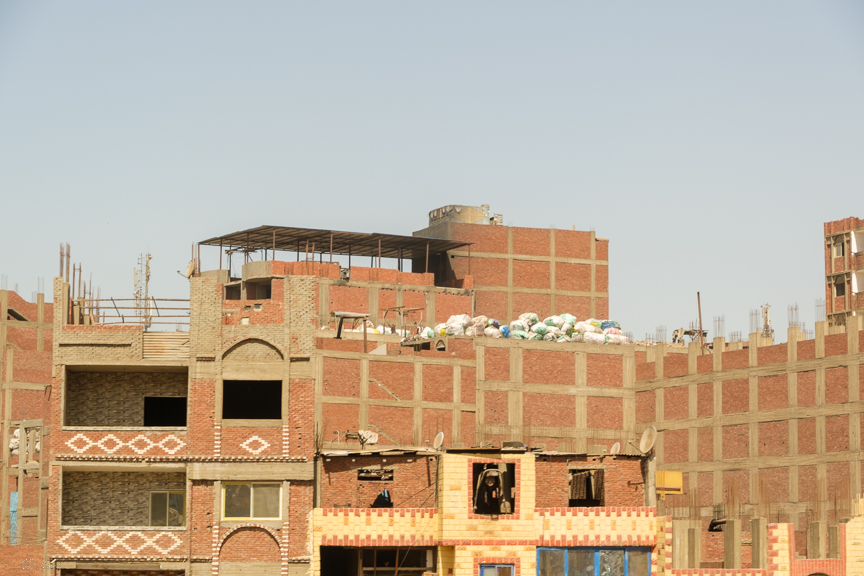Our last tour, the Cave church, is not to be missed. But to get there, we had to drive through the Zabbaleen city, probably the reason Memphis don’t do this tour.
Zabbaleen means “garbage people” in Egyptian Arabic applied to teenagers and adults who have served as Cairo’s informal garbage collectors since the 1940s. The community live in foothills of the Moqattam, a high sandstone ridge forming a strong boundary to the south-east of Cairo. They also live in other parts of Cairo, numbering 50-100,000, about half in the Moqattam.
The Zabbaleen are descendants of farmers who started migrating from Upper Egypt to Cairo in the 1940s. Fleeing poor harvests and poverty they came to the city looking for work and set-up makeshift settlements around the city. Initially, they stuck to their tradition of raising pigs, goats, chickens and other animals, but eventually found collecting and sorting of waste produced by the city residents more profitable. The Zabbaleen would sort through household garbage, salvaging and selling things of value, while the organic waste provided an excellent source of food for their animals. In fact, this arrangement worked so well, that successive waves of migrants came from Upper Egypt to live and work in the newly founded garbage villages of Cairo.
For years, the makeshift settlements of the Zabbaleen were moved around the city trying to avoid the municipal authorities. Finally, a large group of Zabbaleen settled under the cliffs of the Mokattam or Moquattam quarries at the eastern edge of the city. Egypt is a Muslim-majority country, but the Zabbaleen are Coptic Christians. Christian communities are rare to find in Egypt, so the Zabbaleen prefer to stay in Mokattam within their own religious community even though many of them could afford houses elsewhere.
The Coptic Cave Church of Zabbaleen, also known as the Monastery of Saint Simon the Tanner, is a complex of 3 or 4 churches in modified existing caves, the main one, the largest church in the Middle East seating 20000, is full on Palm Sunday. The walls at the entry and within are decorated with Biblical texts and pictograms displaying Biblical events. After the establishment of the church in 1975, the Zabbaleen felt more secure in their location and only then began to use more permanent building materials, such as stone and bricks, for their homes. Given their previous experience of eviction from Giza in 1970, the Zabbaleen had lived in temporary tin huts up till that point. In 1976, a large fire broke out in Manshiyat Nasir, which led to the beginning of the construction of the first church below the Mokattam mountain on a 1,000 square meter site.











